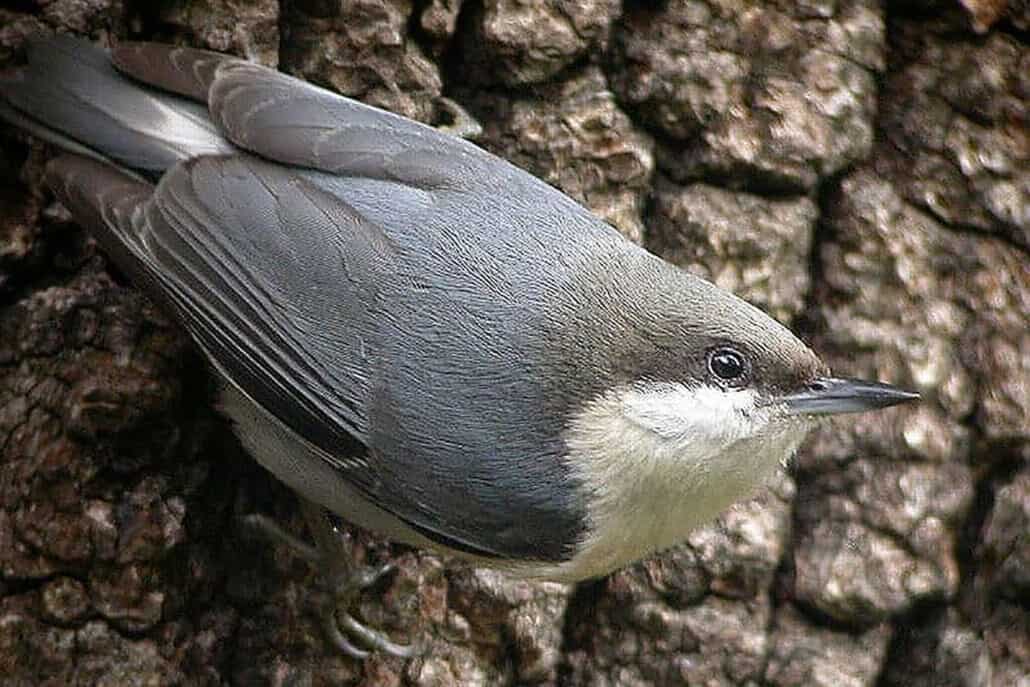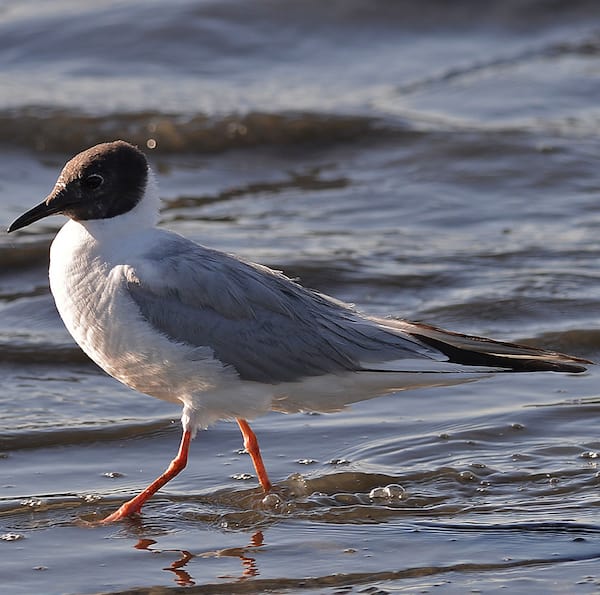Look for
The pygmy nuthatch is a small songbird with a large, round head and short legs, wings, and tail. Its upperwings and back are a cool bluish-gray, while its underparts are off-white with varying levels of a yellowish-brown wash. It has a distinct grayish-brown cap as well as a black stripe that passes through its eyes, and a small whitish patch on its nape. It is often found in flocks with other songbirds, including chickadees, kinglets and warblers.
Listen for
The pygmy nuthatch’s most typical call is a high-pitched, sharp, repetitious series of short, monotone notes: pip-pip-pip-pip
Find it
The pygmy nuthatch lives year round in various parts of the West, from southern British Columbia south into California and South Dakota, and further south into central Mexico. Across the map, the pygmy nuthatch resides in ponderosa pine or other pine or fir forests. It prefers open, high-elevation habitats, relying on old, secluded trees to build their nests.
Diet
The pygmy nuthatch feeds primarily on various insects and seeds including beetles, wasps, ants, caterpillars and pine seeds. It forages in flocks, hopping among the branches of pine trees and on the ground near tree trunks. It uses its bill to peel back loose bark and dig into crevices, picking out any food it finds.
It will also glean insects and seeds off of clusters of needles or cones, both on the tree and on the ground. The pygmy nuthatch will collect seeds all year long and store them in caches in crevices or holes in the tree for later retrieval. It occasionally visits birdfeeders for sunflower seeds and suet.
Nesting Behavior
A mated pair of pygmy nuthatches works together to carve out and form a suitable cavity or hole in a dead tree limb typically from 10 to 50 feet above the ground. They can excavate a new cavity, but more frequently adapt old woodpecker holes or other natural cavities. They will also use nest boxes.
Both sexes gather various soft materials to fill the hole, including feathers and fine plant materials. The female lays four to nine eggs that are pinkish-white with speckles of red or brown. She alone incubates for 15 or 16 days until hatching. Both parents, with the occasional assistance of young male helpers, feed and care for the young before they leave the nest after 20 to 22 days. Helpers are often the offspring from a previous brood.




